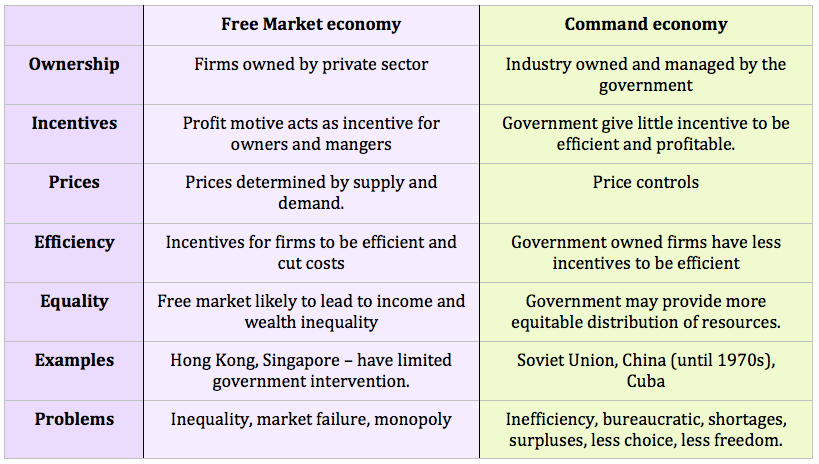A command economy occurs when the government control the main means of production. The government set prices and determines what is produced. A market economy is fundamentally different. It shifts ownership of the means of production to private individuals and firms. Prices and output are determined by market forces. To make the shift from a command economy to a free market economy requires
- Privatisation of state-owned industries
- Removal of price controls
- Removal of tariff barriers
Basic requirements for a successful transition
- Macro economic stability (difficult with period of turmoil)
- Deregulation of Prices
- Liberalization of Trade
- Privatisation of state-owned assets
- Establishment of market-supporting institutions such as property laws
- Social Security, e.g. unemployment benefits.
- External Assistance
Macro Economic Stabilization
When prices were deregulated, rampant inflation was often a problem. However, the problem with reducing inflation is that it can exacerbate the problem of falling Real GDP. Falling Real GDP poses meant problems for governments there will be extra pressure put on the governments budget, there will be fewer taxes collected but increased need for spending
Liberalization of Trade
This is important for exploiting comparative advantage, however, in the short term, the developing economies may struggle to compete.
Privatisation
Many state-owned industries were very inefficient, with poor quality goods, overstaffing, and lack of incentives etc. In the Short-term privatisation caused many problems such as
- an increase in unemployment and a negative multiplier effect
- Many industries were so bad nobody wanted to buy them
- Working practices were not relevant to the free market
- The problem of corruption. Many state managers converted assets into their private property
- There was also a need to privatise the elaborate state admin system
External Assistance
As a % of GDP East Germany got the most and it was the most successful. Russia got the least and struggled the most
Problems faced by Russia and other countries making the change
- GDP fell by 50% between 1989 and 1998 – However, GDP was previously overstated
- Collapse of the value of the rouble led to a fall in confidence and deterred foreign investment
- Crime and Corruption increased.
- The nation’s assets became concentrated in the hands of a few billionaires while many ordinary people saw a fall in the real value of their pensions and wages.
If planning was so bad why did things get worse?
- Statistics were misleading.
- Austere macroeconomic policies needed to prevent hyperinflation in the wake of price liberalization
- Failure of corporate control. Workers and managers not used to incentives of free market
- Lack of Entrepreneurs
- Lack of Trade with Russia
- Inefficient nature of the economy
- Poor infrastructure
- Corruption meant many taxes not collected
Related

